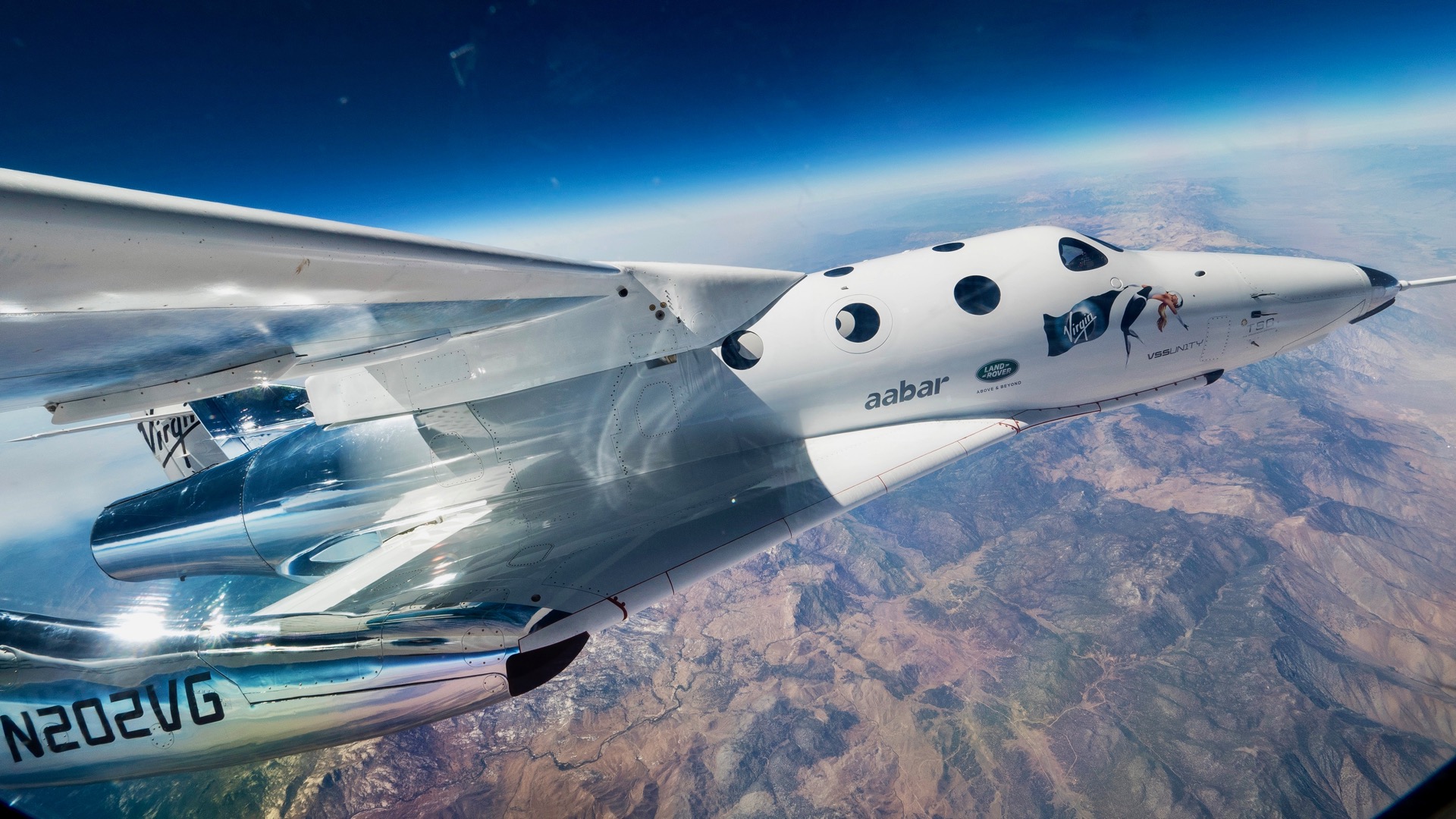Sir Richard Branson is readying himself to take you ‘where no man has gone before’ with Virgin Galactic.
His out-of-this-world space venture, Virgin Galactic plans to charge £200,000 a ticket to launch passengers from the company’s New Mexico spaceport.
Virgin Galactic has announced that the world’s first specifically designed commercial spaceport is “operationally functional”.

Virgin Galactic had been carrying out test flights from Mojave, California – including the first successful launch of its tourism rocket plane into space in December last year.
Over 600 people have already paid £64.2million of deposits to the company to secure their tickets on the first spaceflights.
The firm also revealed the interior of its “Gateway to Space” building at the spaceport.
The glitzy structure includes two floors primarily focused on spaceflight operations, and a further floor of communal spaces specifically designed for future customers.
As a result of the completion of the interior work, the company said the spaceport facility can now “support Virgin Galactic’s flight requirements”.
The company has said the communal area is specifically designed for astronauts to share their experience with pilots, rocket engineers and operatives from Mission Control.

How Virgin Galactic will fly tourists to space
Here’s everything you need to know…
- Unlike most space flight companies, Virgin Galactic will not use a rocket to launch tourists to space.
- Instead, its VSS Unity Space plane will head toward space strapped to an enormous carrier plane called White Knight Two.
- At around 50 miles above the Earth’s surface – the border of outer space as defined by Nasa – VSS Unity will detach from its mothership.
- Within seconds, the space plane will engage its rocket motor and Unity will fly at a near-vertical angle into suborbital space, hitting three and a half times the speed of sound.
- After the rocket motor has fired for around a minute, the pilots will safely shut it down, giving riders around two minutes of weightlessness.
- The pilots will then swivel Unity around and return it to Earth, landing it like a commercial airliner.
Branson has previously claimed he would fly in one his firm’s space planes this year, with the first commercial flights going up a few months later.
A spokesperson told the Sun: “We are working towards commercial operation in 2020.”
That’s a pretty ambitious target, and is worth taking with a pinch of salt, as Branson has repeatedly overshot his first flight predictions.
The billionaire founded Virgin Galactic in 2004, and initially predicted the maiden space flight would launch by 2009. The date has been repeatedly pushed back due to technical problems.

A successful maiden flight manned by two pilots finally took place in mid-December 2018.
If all goes to plan, space fans will be launched more than 50 miles above Earth – a point at which Nasa define travellers as astronauts.
Passengers will ride aboard SpaceShipTwo, a spaceplane designed to carry six passengers and two pilots.
It is carried aloft by a large aeroplane before breaking away and zooming to an altitude of about 62 miles.
With a hefty price tag of $250,000 USD (£175,000) a ticket, the 90-minute flight is being aimed at wealthy celebrities and thrill-seekers, as well as researchers.
Branson has said that “ultimately” he would like to see the price fall as low as $40,000 (£30,700) over the next decade.
Last month, Virgin Galactic announced its merger with New York-listed Social Capital Hedosophia to set itself up to become the first and only publicly traded commercial human spaceflight company.
Commenting on the unveiling of the new spaceport, the company said: “Virgin Galactic has striven to remain faithful to that tradition by choosing an elegant, experience-focused concept for the space launch system itself.
“Similarly, the company’s choice to operate from Spaceport America in New Mexico was due in no small part to the state’s decision to commission landmark architecture for the world’s first purpose-built commercial spaceport.
“The Foster + Partners Gateway to Space facility pays homage to the past in its respect for the ancient surrounding landscape while powerfully embracing the future through energy efficiency and sustainability.







